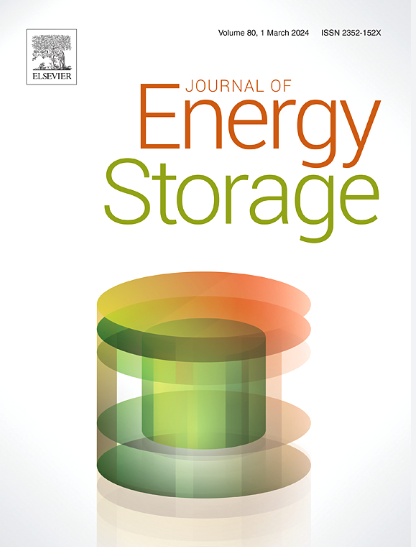Operational flexibility enhancement of a combined heat and power plant supplying industrial steam: The integration of sensible or sensible-latent heat storage system
IF 8.9
2区 工程技术
Q1 ENERGY & FUELS
引用次数: 0
Abstract
The increasing penetration of renewable energy requires greater operational flexibility of thermal power plants, as dispatchable power sources are essential to balance the power supply and demand sides. However, the CHP plant has restricted load cycling range due to its heat dominated operation mode. The Integration of a high-temperature heat storage system is a potential solution to enhance the operational flexibility of the CHP plant that cogenerates industrial steam and power. However, the optimal design of the heat storage system integrated within a CHP plant is complicated due to the changing operation conditions and various heat exchanging mediums. In this study, the design method of the sensible or sensible-latent heat storage system integrated with a CHP plant supplying industrial steam was proposed. The simulation, exergy analysis and economic analysis models were developed, and a case study of 350 MW CHP plant was conducted. The maximum CHP plant output power decrement is 13.59 MW when the heat of flue gas and main steam is stored in the sensible or sensible-latent heat storage system. The exergy-to-exergy efficiencies of sensible and sensible-latent heat storage systems are 71.60 % and 77.76 %, respectively. However, the economic analysis results show that the sensible heat storage system is more cost-effective than the sensible-latent heat storage system.
提高工业蒸汽热电联产电厂的运行灵活性:显式或显式潜热储热系统的集成
可再生能源的日益普及要求火力发电厂具有更大的运行灵活性,因为可调度的电源对于平衡电力供需方面至关重要。然而,热电联产电厂以热为主的运行模式限制了负荷循环范围。高温储热系统的集成是一个潜在的解决方案,可以提高热电联产工厂的操作灵活性,热电联产工业蒸汽和电力。然而,由于热电联产装置运行条件的变化和换热介质的不同,热电联产装置内集成蓄热系统的优化设计比较复杂。在本研究中,提出了与热电联产厂供应工业蒸汽集成的显潜热或显潜热蓄热系统的设计方法。建立了仿真模型、火用分析模型和经济分析模型,并以350mw热电联产电厂为例进行了研究。采用显式或显式潜热蓄热系统蓄热时,热电联产机组输出功率最大减少13.59 MW。显潜热蓄热系统和显潜热蓄热系统的火用效率分别为71.60%和77.76%。然而,经济分析结果表明,显热蓄热系统比显潜热蓄热系统更具成本效益。
本文章由计算机程序翻译,如有差异,请以英文原文为准。
求助全文
约1分钟内获得全文
求助全文
来源期刊

Journal of energy storage
Energy-Renewable Energy, Sustainability and the Environment
CiteScore
11.80
自引率
24.50%
发文量
2262
审稿时长
69 days
期刊介绍:
Journal of energy storage focusses on all aspects of energy storage, in particular systems integration, electric grid integration, modelling and analysis, novel energy storage technologies, sizing and management strategies, business models for operation of storage systems and energy storage developments worldwide.
 求助内容:
求助内容: 应助结果提醒方式:
应助结果提醒方式:


